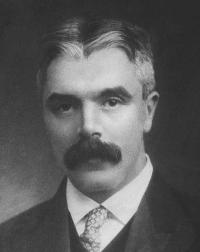Papers, etc.
Dyson’s papers are in the Royal Greenwich Observatory archives at Cambridge University. Dyson’s correspondence with G.E. Hale is in the Hale microfilms.
Other References: Historical
Search ADS for works about Dyson
BBC News, “Six Pip Salute,” 5 February 1999
Guardian Unlimited, Special Reports: “With the Astronomer Royal” 30 June 1927
Brück, Herman A., The Story of Astronomy in Edinburgh (Edinburgh University Press, Edinburgh, UK, 1983).
Chandrasekhar, S., “Verifying the Theory of Relativity,” Bull. Atomic Sci. (1976); reprinted in Notes and Records of the Royal Society 30, 249–60 (1976).
Crelinsten, Jeffrey, Einstein’s Jury: The Race to Test Relativity (Princeton Univ. Press, Princeton, NJ, 2006).
Dyson, F.W., “The Work of the Royal Observatory, Greenwich,” Observatory, 55, 221-24 (1932).
Earman, John & Clark Glymour, “Relativity and Eclipses: The British Eclipse Expeditions of 1919 and Their Predecessors,” Historical Studies in the Physical Sciences 11, 49-85 (1980).
Forbes, E. G. , A.J. Meadows, & H.D. Howse, Greenwich Observatory: the Royal Observatory at Greenwich and Herstmonceux 1675-1975, volumes 1-3, (Taylor and Francis, London, 1975).
Higgitt, Rebekah, “Cosmic Diary: Greenwich 1894”
Johnson, Peter Jeffrey, The History of the Royal Observatory and Royal Greenwich Observatory (Royal Greenwich Observatory, Herstmonceux, 1987).
Maunder, E. Walter, The Royal Observatory, Greenwich: A Glance at its History and Work (The Religious tract Society, London, 1900).
McCrea, William Hunter, Royal Greenwich Observatory: An Historical Review issued on the occasion of its Tercentenary (HMSO, London, 1975).
McCrea, W.H., “The Royal Observatory and the Study of Gravitation,” Notes and Records of the Royal Society 30, 133–40 (1976).
Meadows, A.J., Greenwich Observatory: The Royal Observatory at Greenwich and Herstmonceux, vol. 2: Recent History 1836-1975 (Taylor & Francis, London, 1975).
Spencer Jones, Harold, The Royal Observatory, Greenwich (Longmans Green & Co., London, etc., 1944).
Other References: Scientific
Search ADS for works by Dyson
Dyson, F.W. & W.G. Thackeray, “A Determination of the Constant of Precession and the Direction of the Solar Motion from a Comparison of Groombridge’s Catalogue (1810) with Modern Greenwich Observations,” MNRAS 65, 428-57 (1905).
Dyson, F.W., “Wireless Time Signals,” Observatory 36, 467-71 (1913).
Dyson, Frank Watson, “On the Opportunity Afforded by the Eclipse of 1919 May 29 of Verifying Einstein’s Theory of Gravitation,” MNRAS 77, 445-47 (1917).
Dyson, Frank Watson, Arthur Stanley Eddington, & Charles Davidson, “A Determination of the Deflection of Light by the Sun’s Gravitational Field, from Observations Made at the Total Eclipse of May 29, 1919,” Phil. Trans. of the Royal Society 220, 291-333 (1920).
Dyson, Frank Watson, Greenwich Catalogue of Stars for 1910.0. Part I. Fundamental Stars. Part II. Stars in the Zone +24°.0 to +32°.0. From Observations with the Transit Circle Made at the Royal Observatory, Greenwich, 1903-1914, under the Direction of Sir Frank Watson Dyson, Astronomer Royal (Neill, Edinburgh, 1920).
Dyson, F.W., “Greenwich Mean Time,” Observatory, 44, 158-59 (1921).
Dyson, Frank Watson, Observations Made with the Cookson floating Zenith Telescope in the Years 1911-1918 at the Royal Observatory, Greenwich, for the Determination of the Variation of Latitude and the constant of Aberration under the Direction of Sir Frank Dyson ... astronomer royal (Neill, Edinburgh, 1921).
Dyson, Frank Watson, Observations of Stellar Parallax from Photographs taken and Measured at the Royal Observatory, Greenwich, vol. 1 and vol. 2, (H.M. Stationery Off., London, 1925 and 1934).
Dyson, F.W. & R.T. Cullen, “Greenwich Observations of the Sun and the Four Outer Planets, from 1901-1928,” MNRAS 89, 256 (1929).
Dyson, Frank Watson, Photographic Magnitudes of Stars Brighter than 14m.0 in 40 of Kapteyn’s Selected Areas, Determined at the Royal Observatory, Greenwich, under the Direction of Sir Frank Dyson (H.M. Stationery Off., London, 1931).
Dyson, F.W. & R.v.d.R. Wooley, Eclipses of the Sun and Moon (Clarendon Press, Oxford, 1937).
Other Works: Popularizations, Textbooks, History, etc.
Dyson, Frank W., “Measurement of the Distances of the Stars,” Observatory 38, 249-54 (1915) and 38, 292-99 (1915) [Halley lecture].
Dyson, F.W., “The Commencement of the Astronomical Day,” Observatory 40, 301-02 (1917).
Dyson, Frank Watson, Astronomy, a Handy Manual for Students and Others (J.M. Dent & Sons, London, 1910 and E.P. Dutton & Co., New York, 1918).
Dyson, Frank, “The Determination of Stellar Distances,” JRASC 12, 195-201 (1918) [reprinted from Scientia].
Dyson, F.W., “Sixty years of Meridian Astronomy,” Observatory 60, 95-99 (1937).
Dyson, Frank, “Sir William Herschel, 1738-1822,” JRASC 32, 441-46 (1938) [reprinted from Nature].
